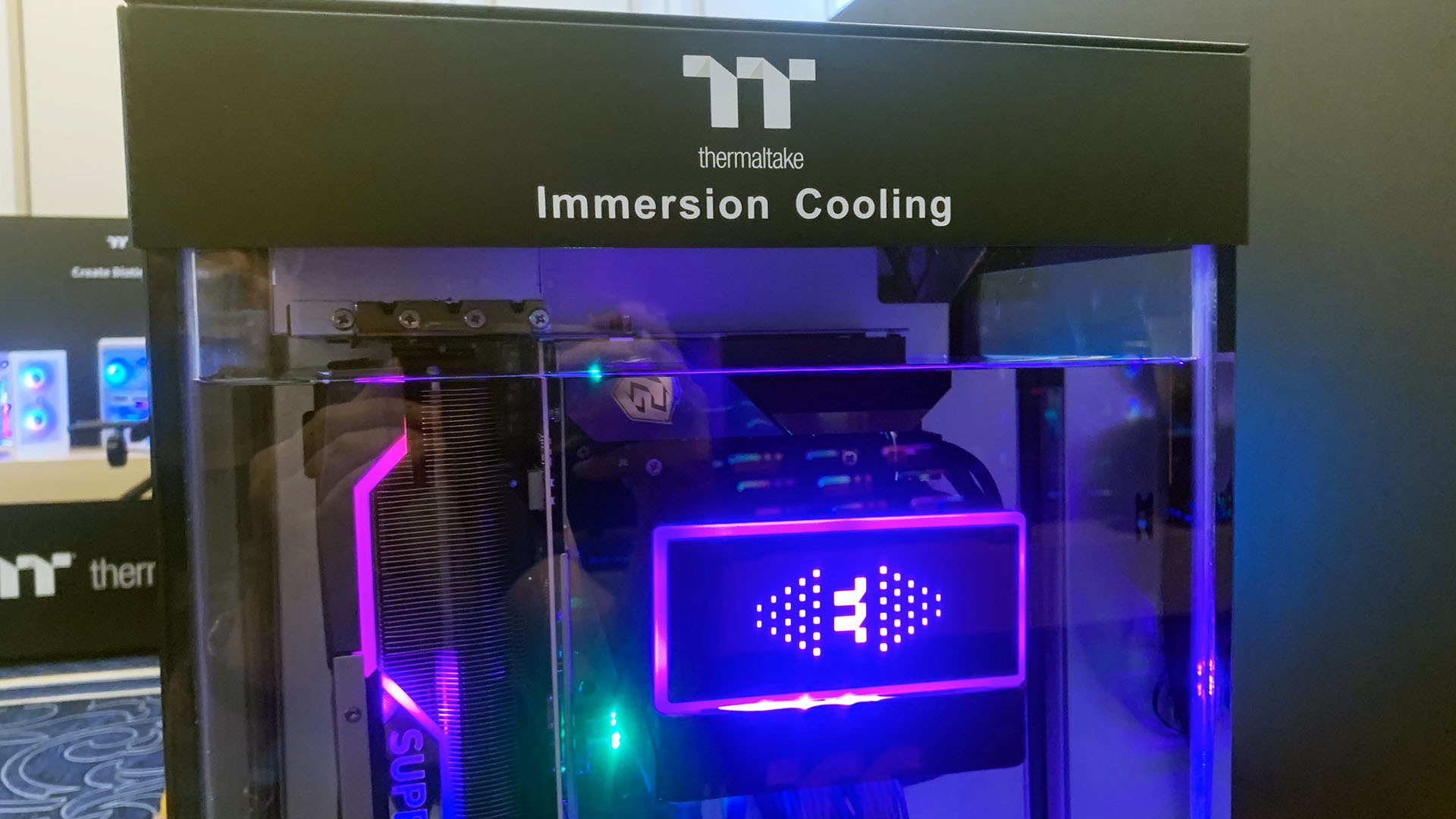How do you beat a water-cooled gaming PC? With a full immersion PC, of course, where you sink all of your components into a bath of liquid. It’s a technique already used for servers, but Thermaltake showed off a couple of full-immersion gaming PC designs at CES 2025, including a mini-ITX model, and we’re intrigued.
While it may seem like anathema to immerse several grands’ worth of electronic components in a case full of liquid, the dielectric coolant used in these systems ensures it won’t conduct any electricity, and it also massively reduces temperatures. In fact, Thermaltake says the systems can reduce CPU and GPU temperatures by around 20°C compared to using one of the best AIO cooler designs.
I’ll admit it was a bit disconcerting seeing these systems on the CES show floor, where you could see the surface of the liquid coolant wobbling over the top of the graphics card and motherboard, but it does seem to work. It’s quite a different system from your average water-cooling loop too, as the whole system is bathed in liquid, rather than being focused into waterblocks.
Called a single-phase liquid cooling system, it works on the principle that the liquid in the front chamber will absorb the heat from the hot-running components, and this coolant is funneled back to a rear chamber that’s crammed with a large radiator. The coolant, which makes use of biodegradable oils and has a high boiling point, is then cycled to and from the radiator through tubes, resulting in a single-phase heat exchange system. That’s as opposed to dual-phase systems where the state of the coolant actually changes as it gets hot or cold, as is the case with heat pipes.
A full-size ATX model was on display at CES, which needs three 420mm radiators in the rear chamber to keep its component bath cool. However, I was also intrigued by the Thermaltake IX300 mini-ITX model on display, which has a single GPU, which has a smaller chassis with a pair of 360mm radiators in the rear chamber.
Thermaltake also points to the coolant’s high boiling point meaning it requires less in the way of regular top-ups and maintenance than other liquid-cooling systems. However, we don’t fancy having to drain it for an upgrade.
Is this the future of PC cooling? Probably not, but it’s a novel idea that could gain traction with high-end enthusiasts and overclockers, as well as creators who run workstations with multiple high-end GPUs. I’ve seen a few full-immersion experiments with PCs before, usually homebrew creations by enthusiasts, but this is the most accomplished version I’ve seen. You could potentially buy a full immersion gaming PC ready-made using one of these systems.
If you like your cooling system a little tamer, check out our guide to the best CPU cooler, which covers traditional air coolers, as well as AIO models. If you’re feeling a bit more adventurous, you can also read our guide on how to water cool your PC if you’ve never done it before, and we’ll give you a grounding in the basics.




